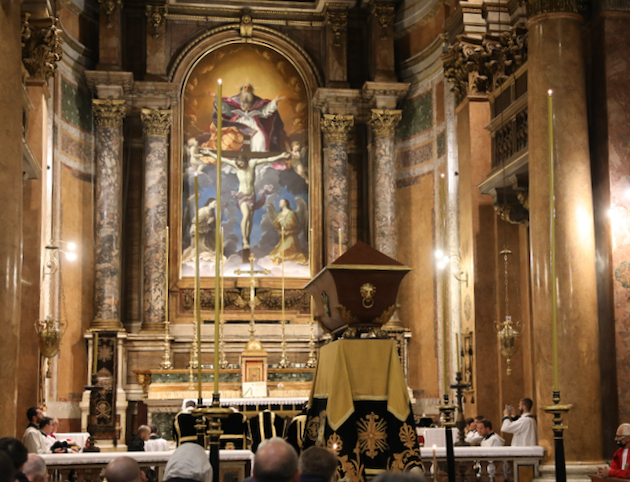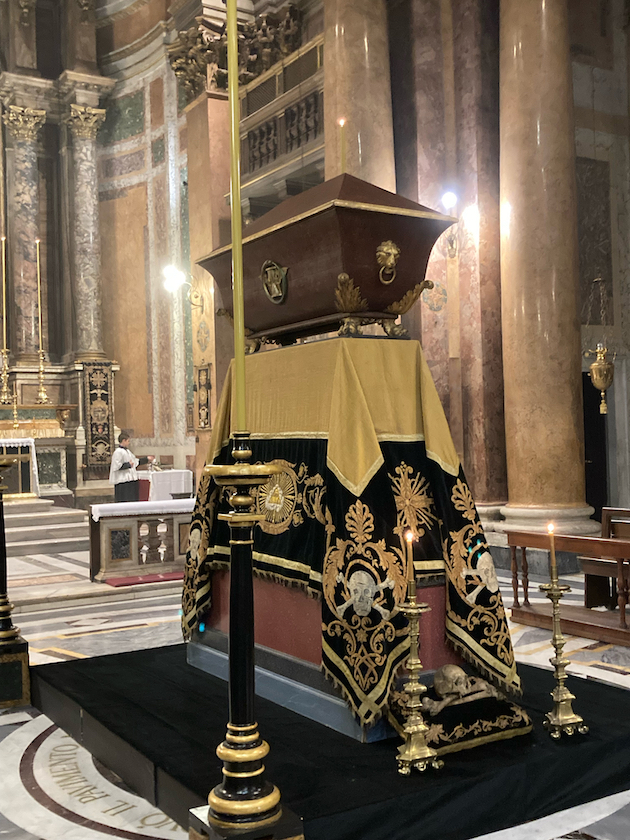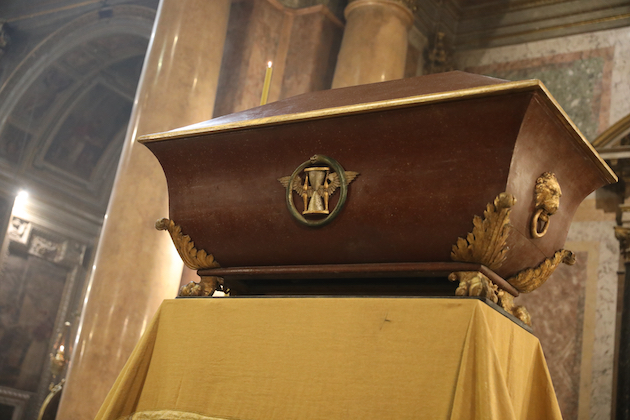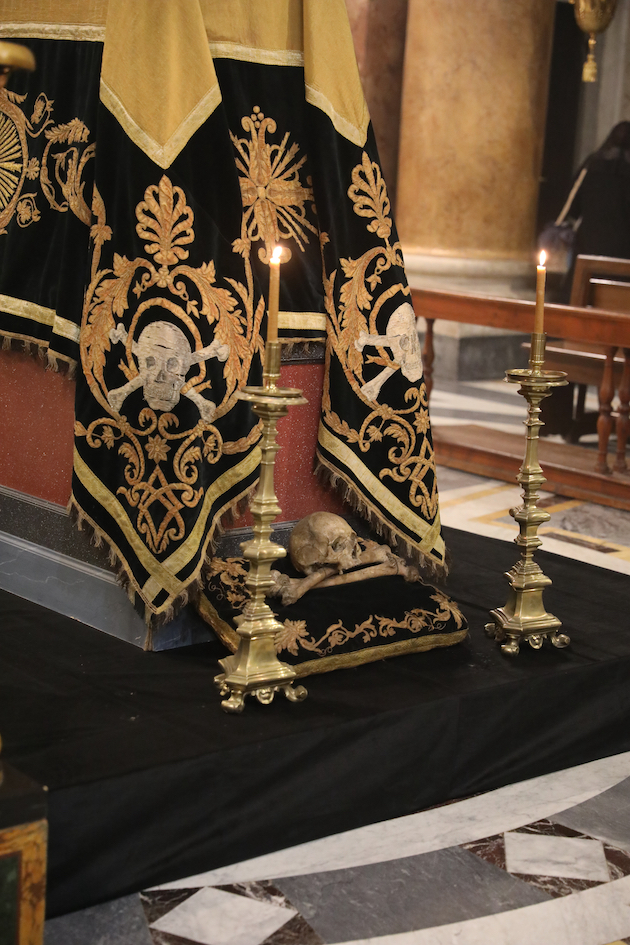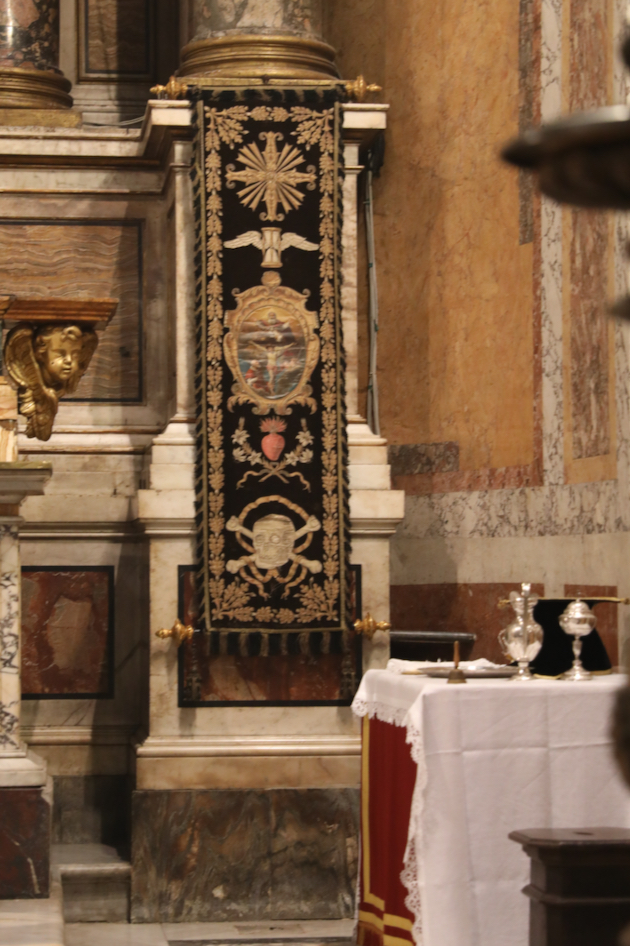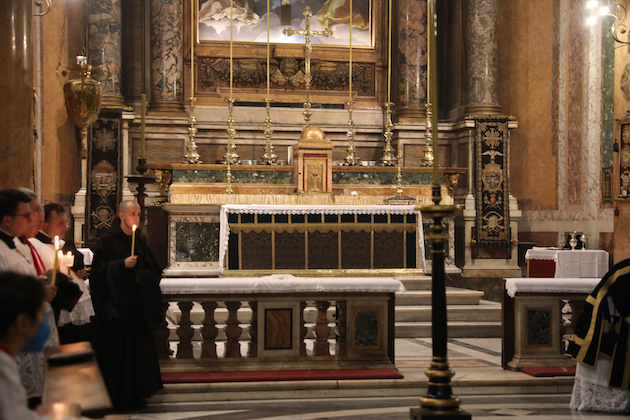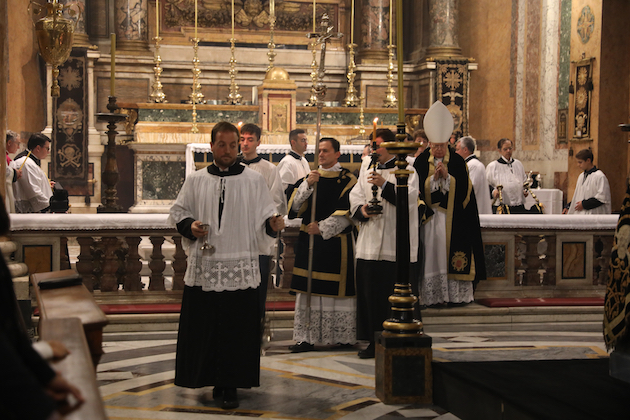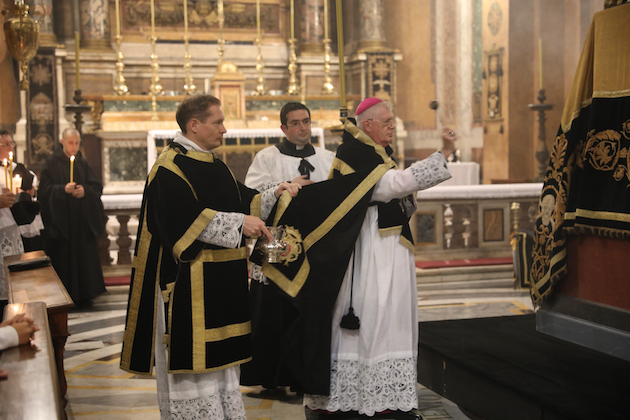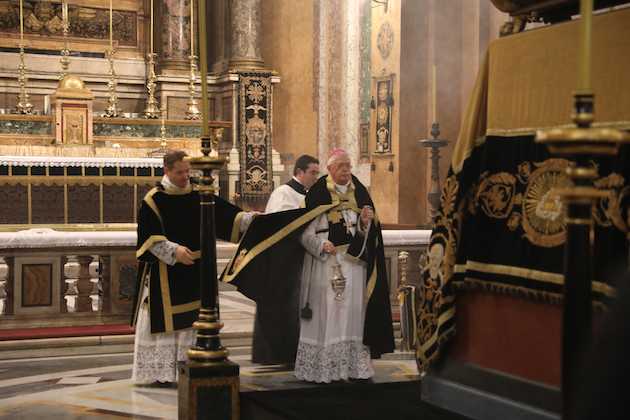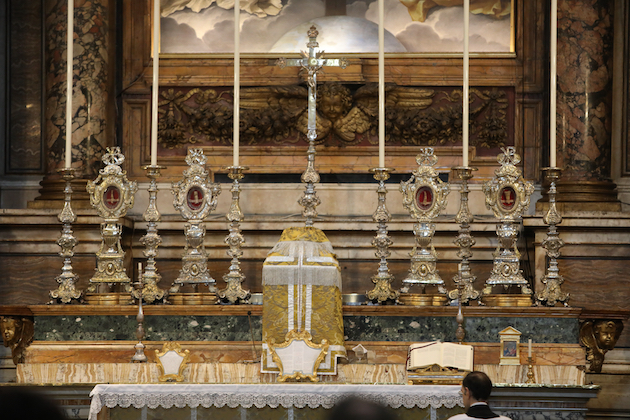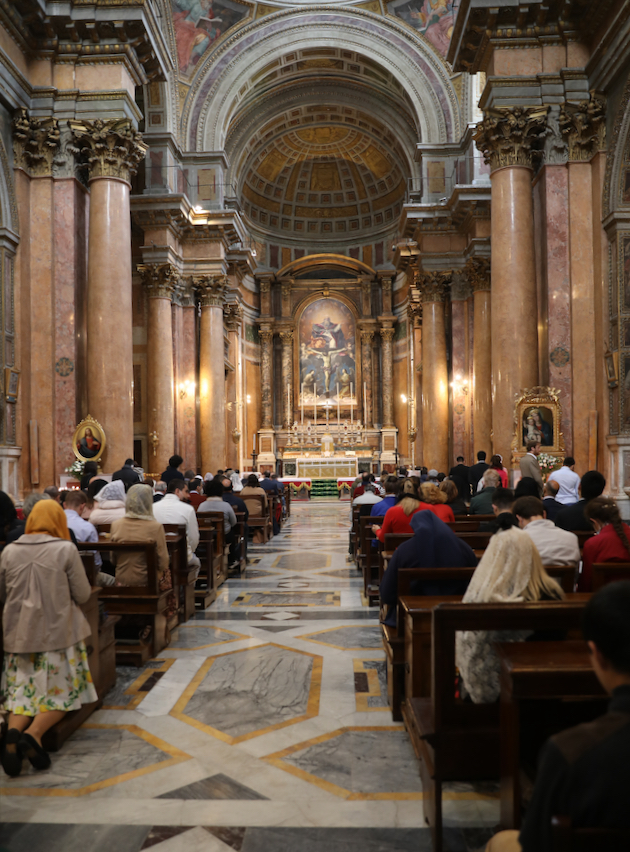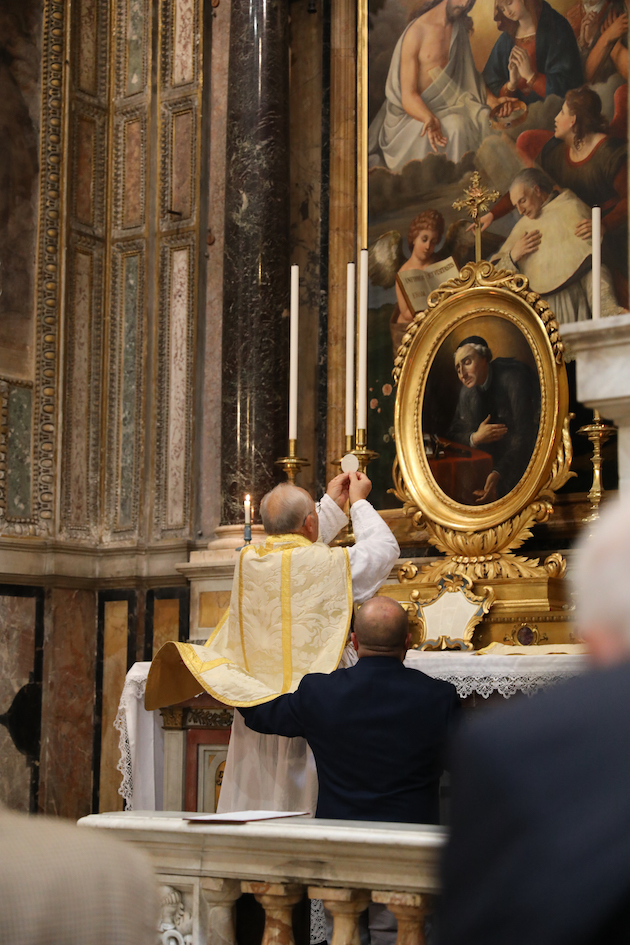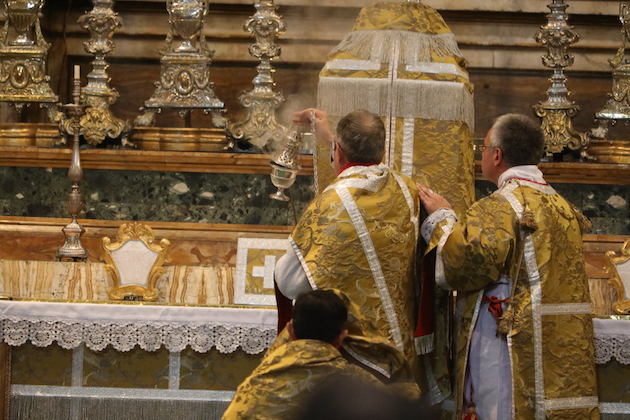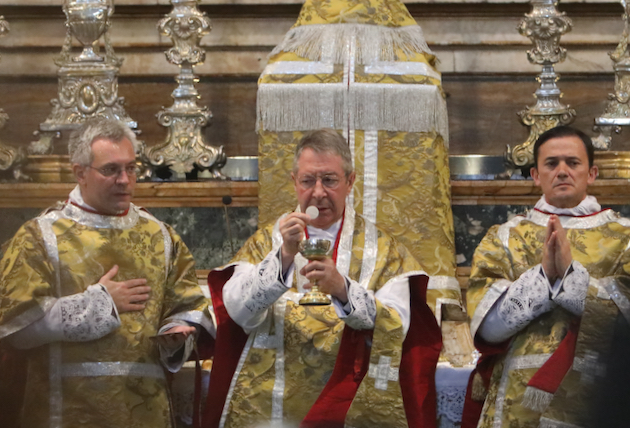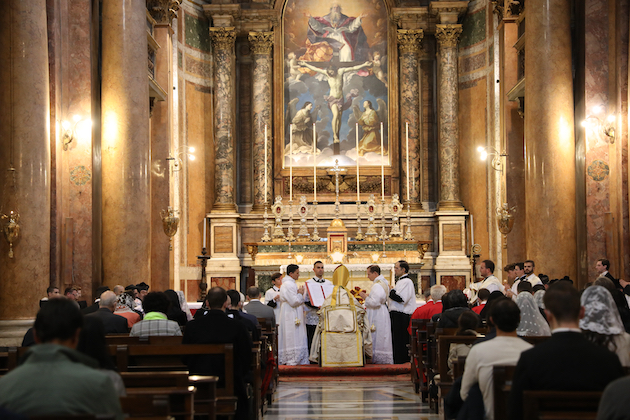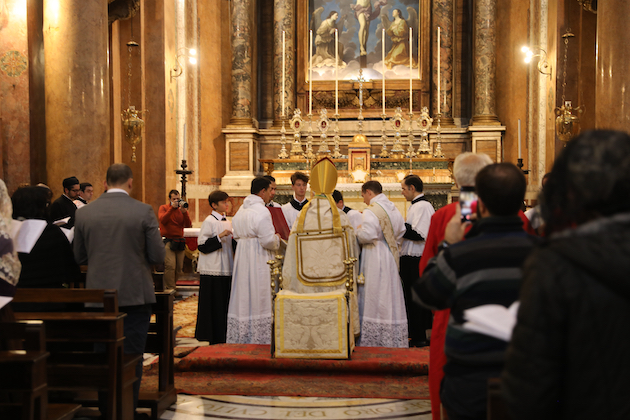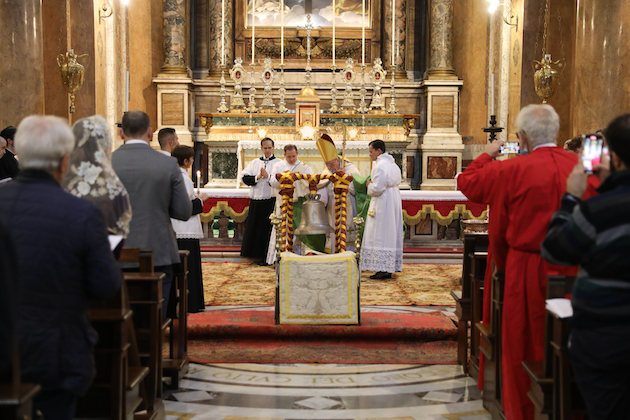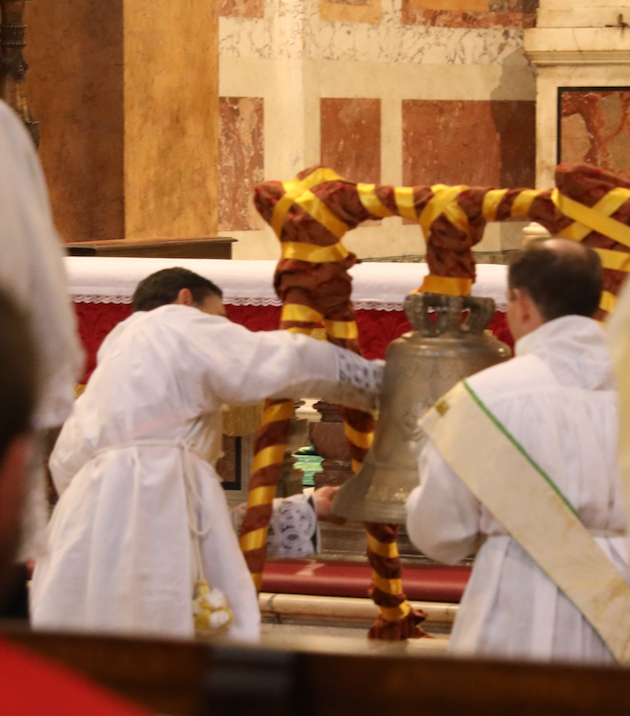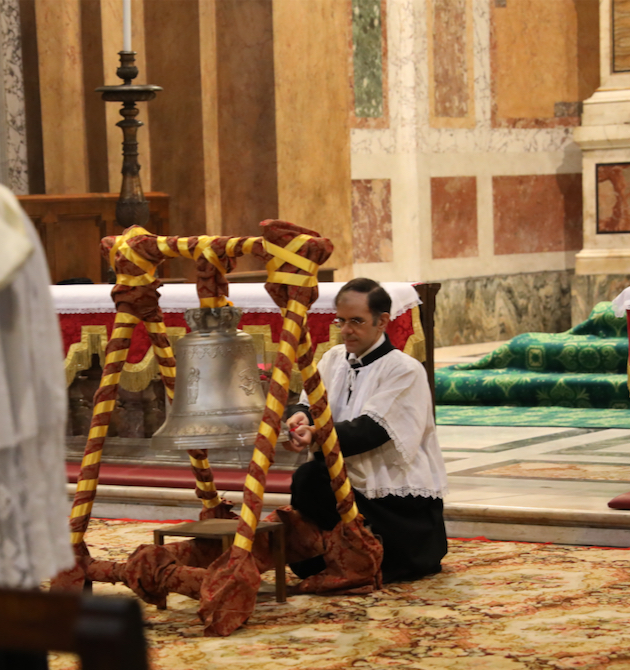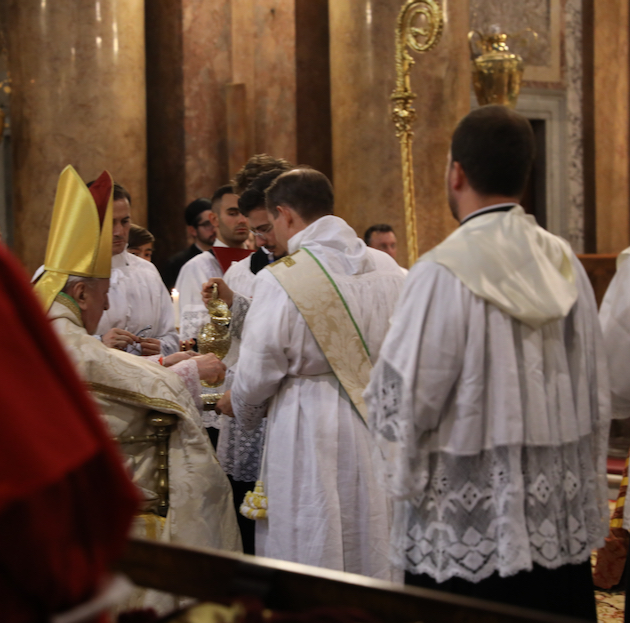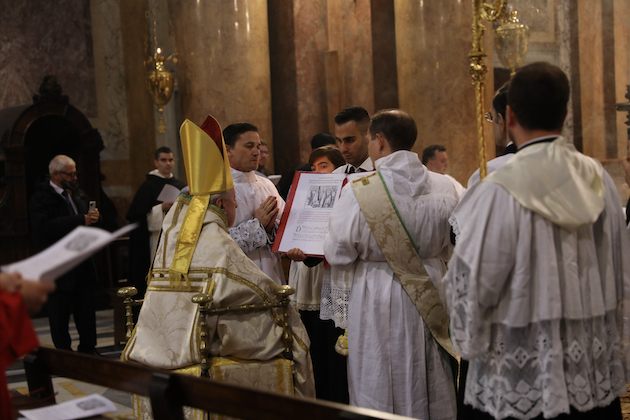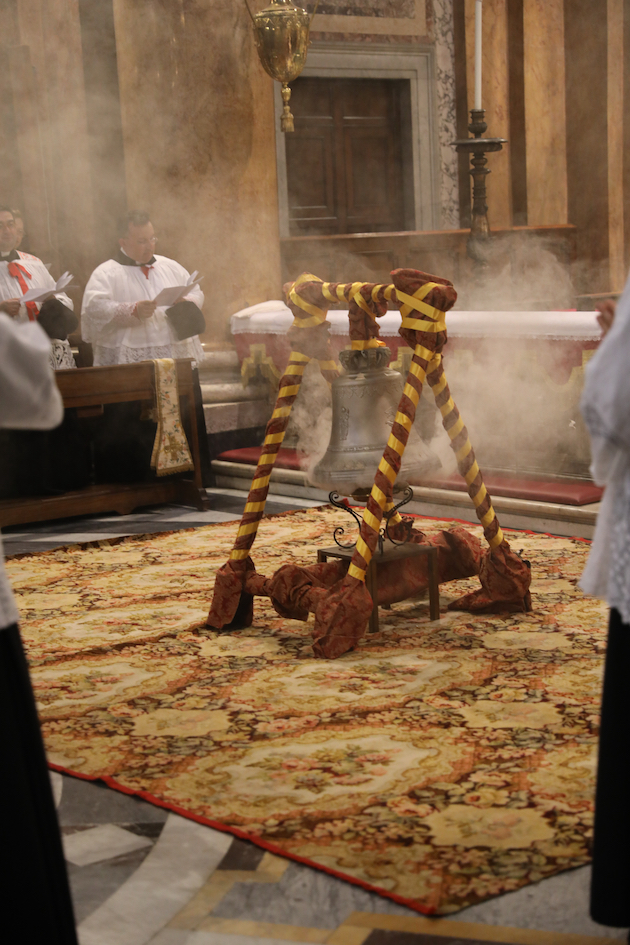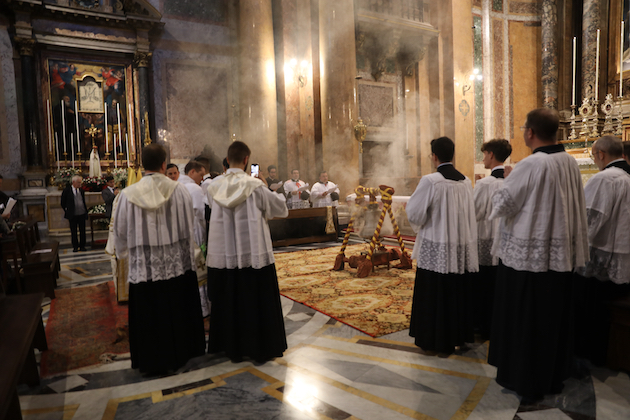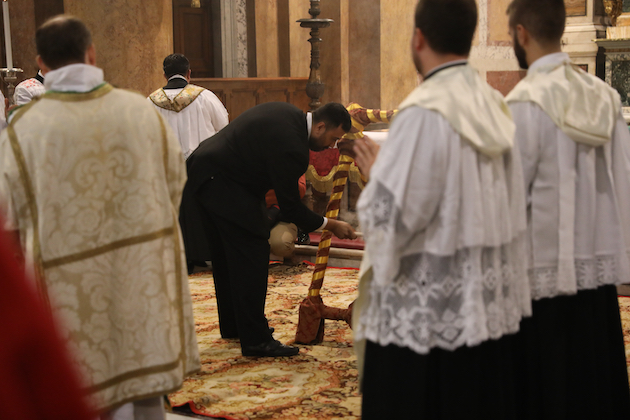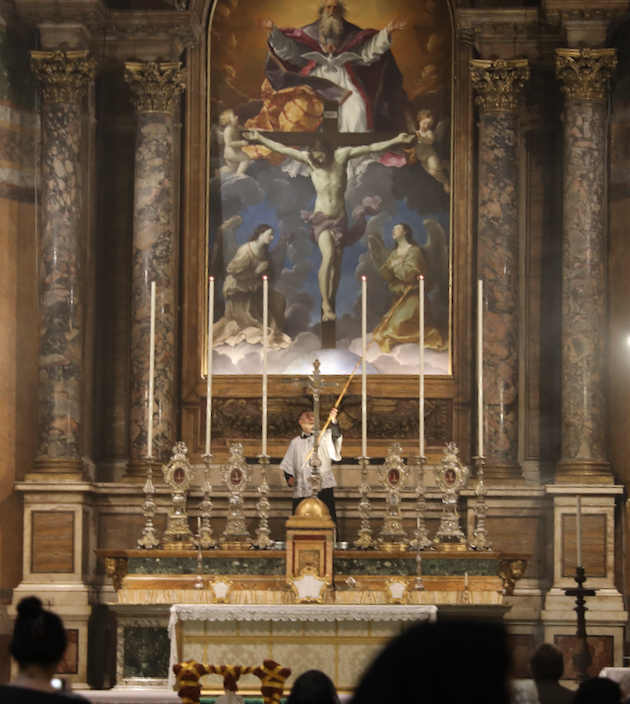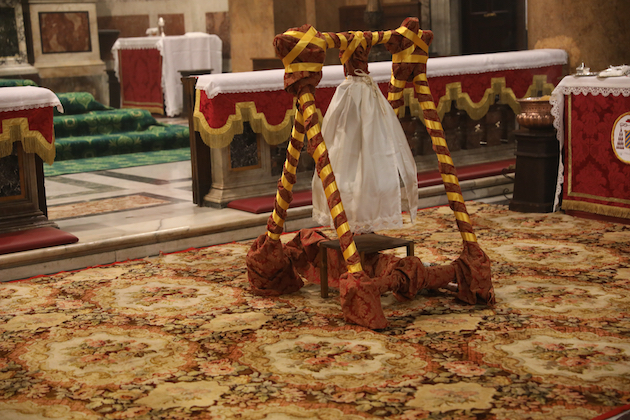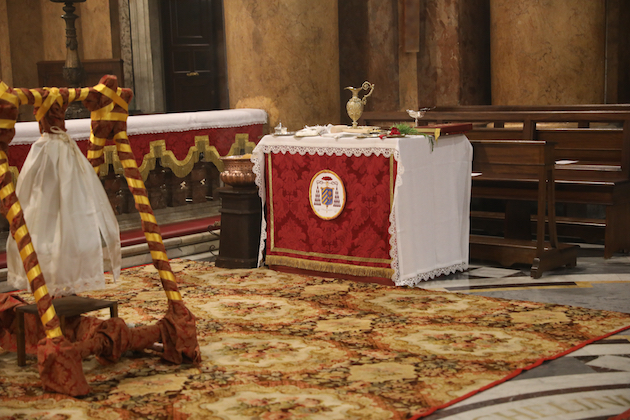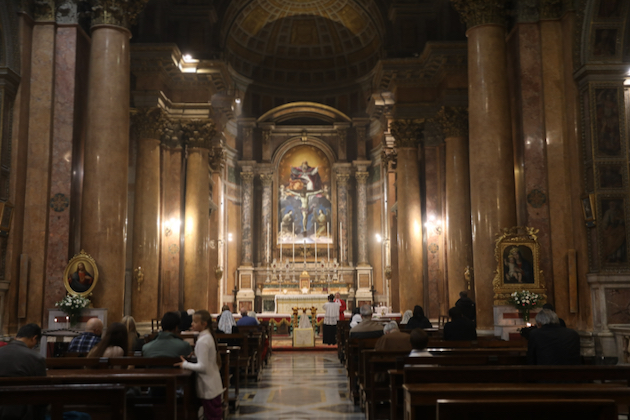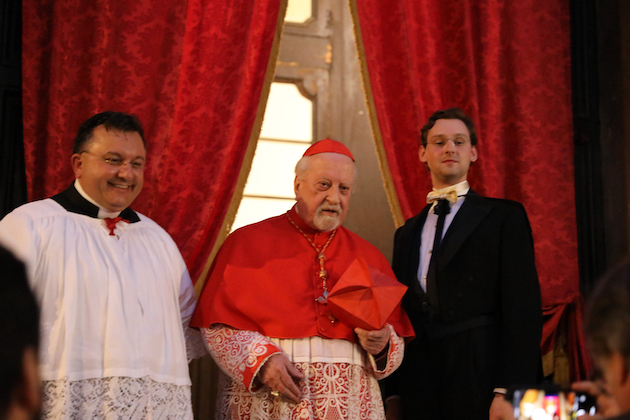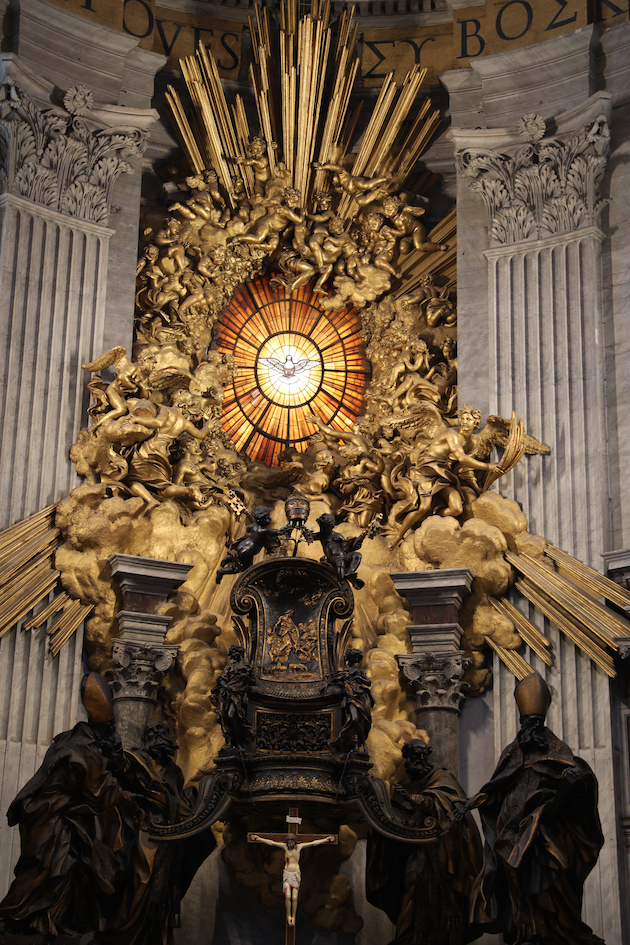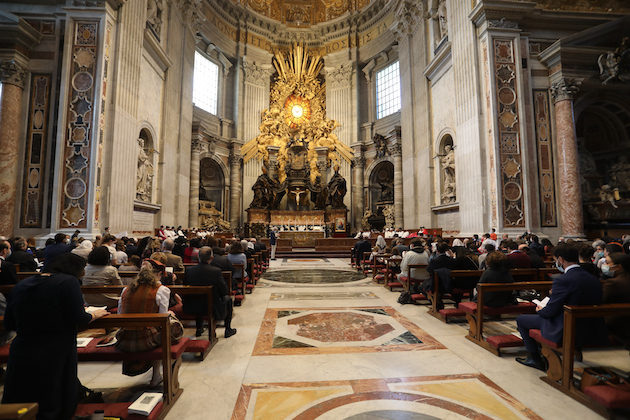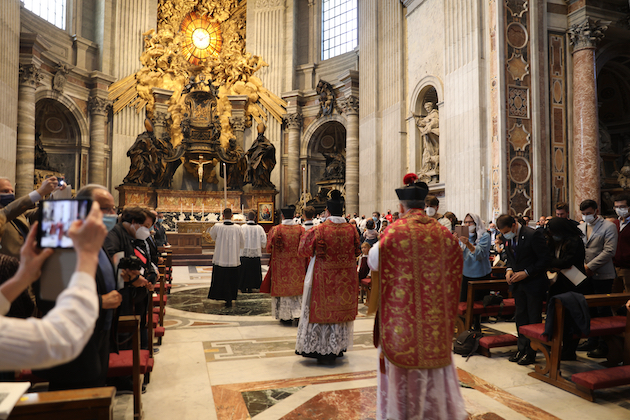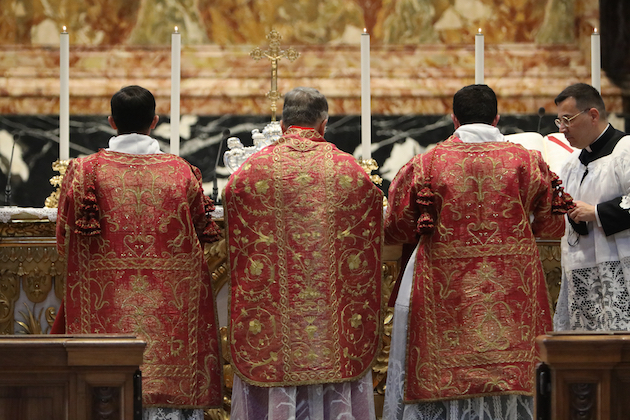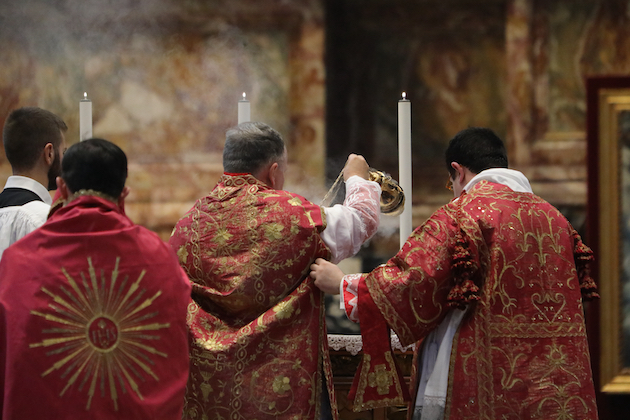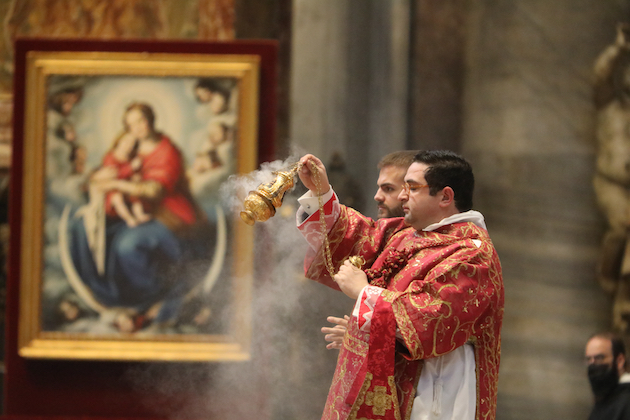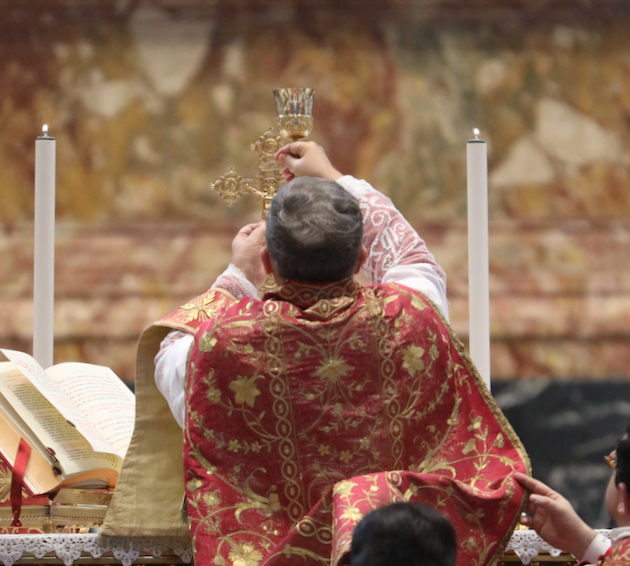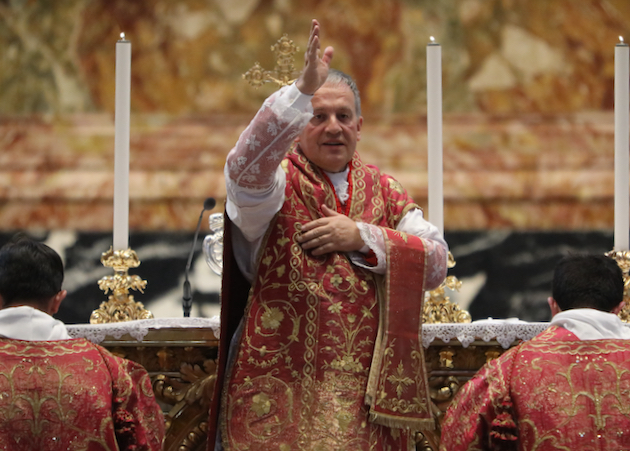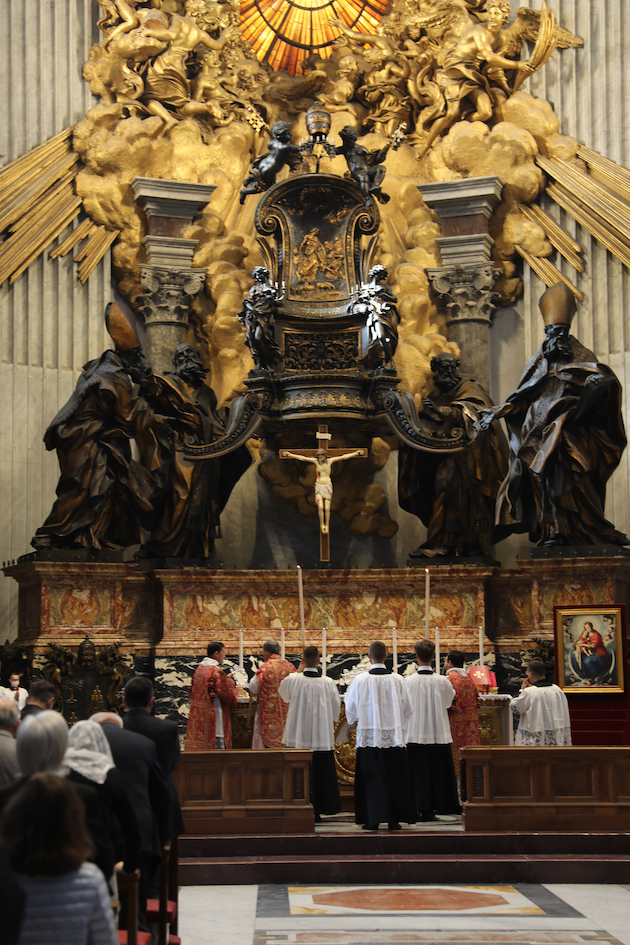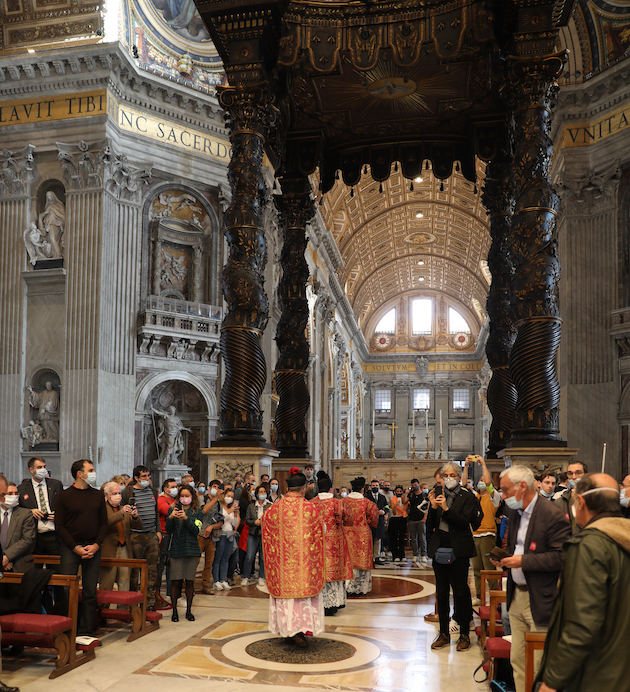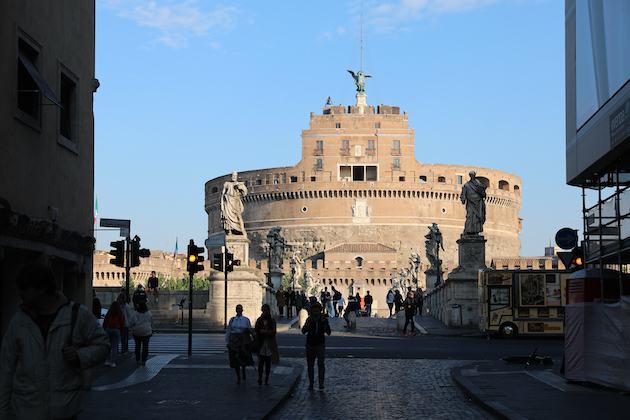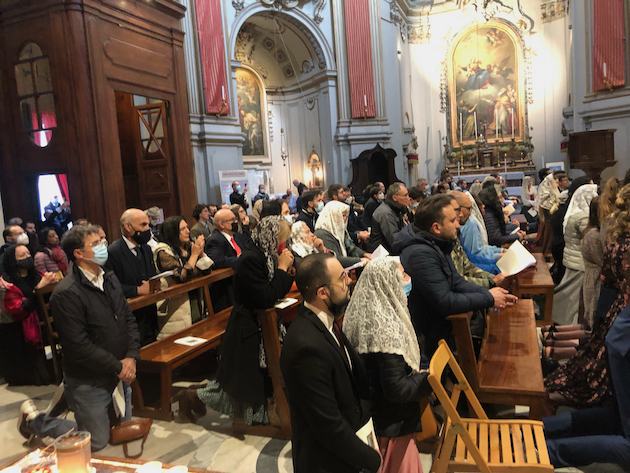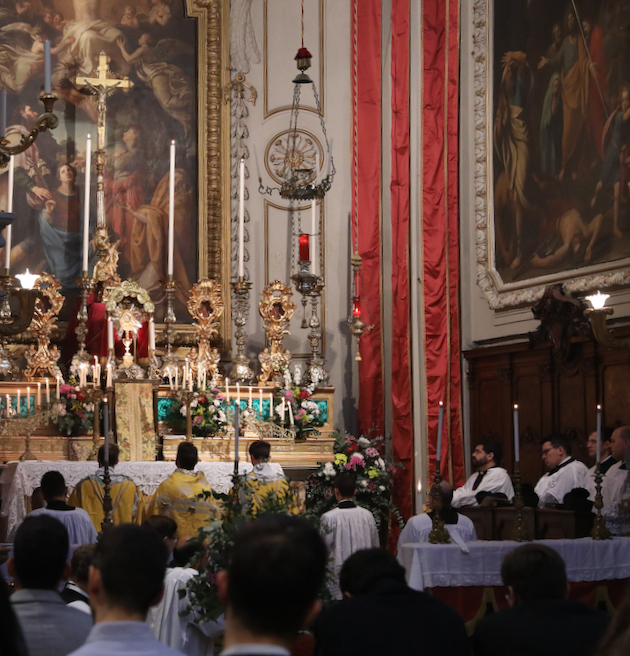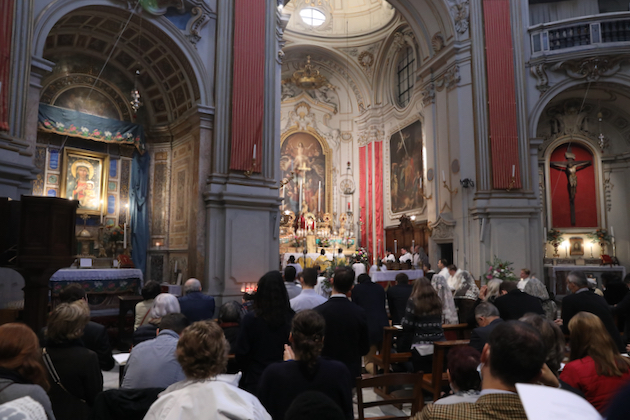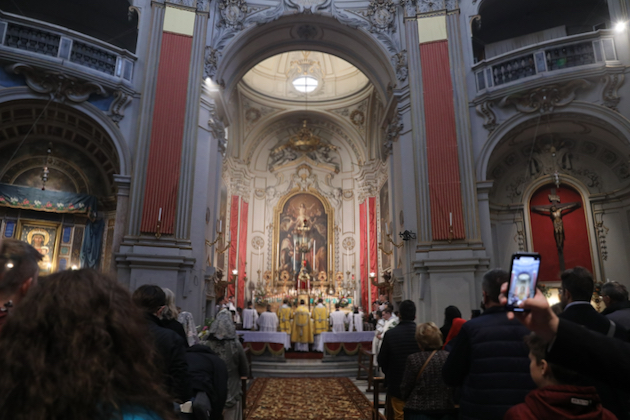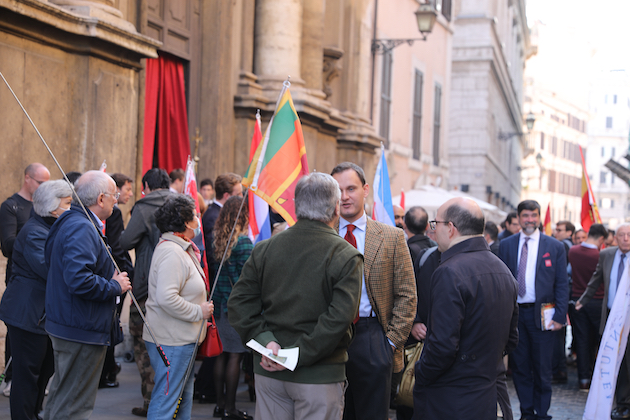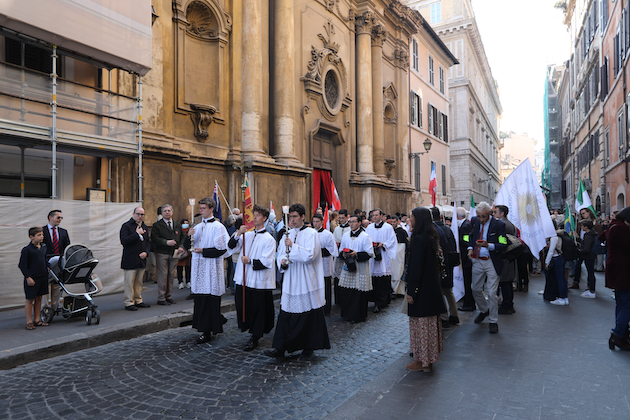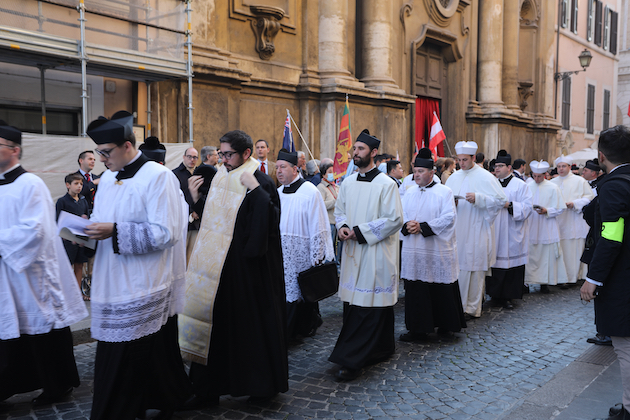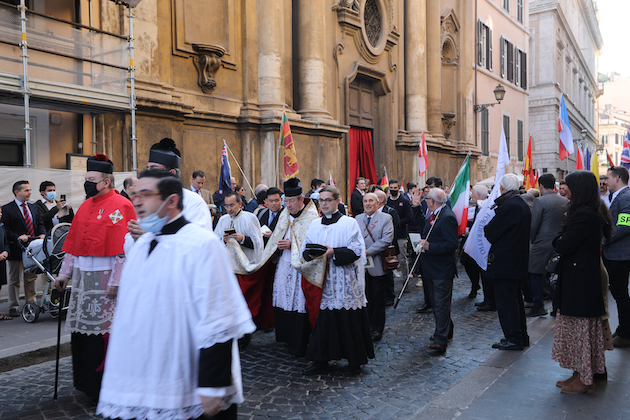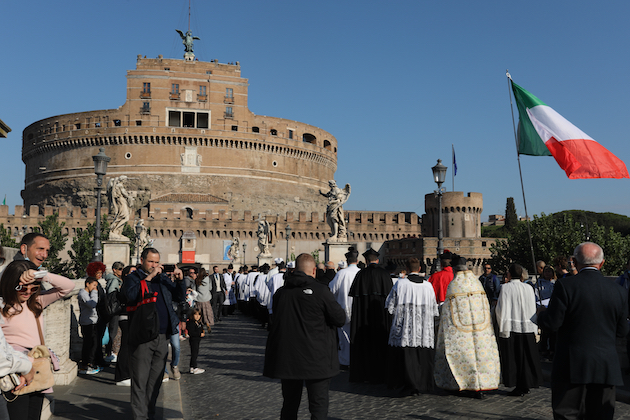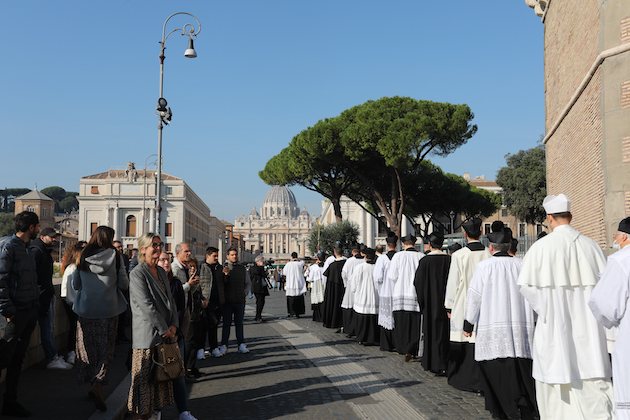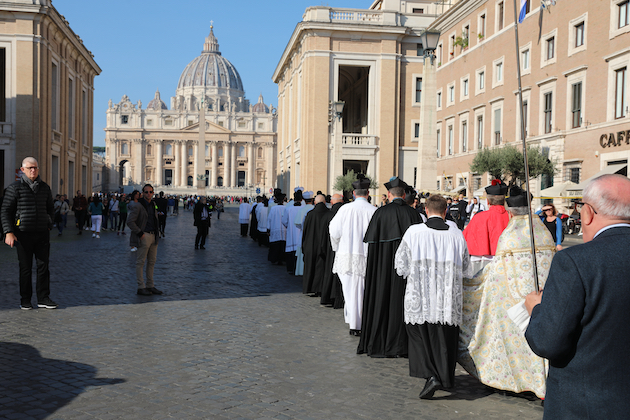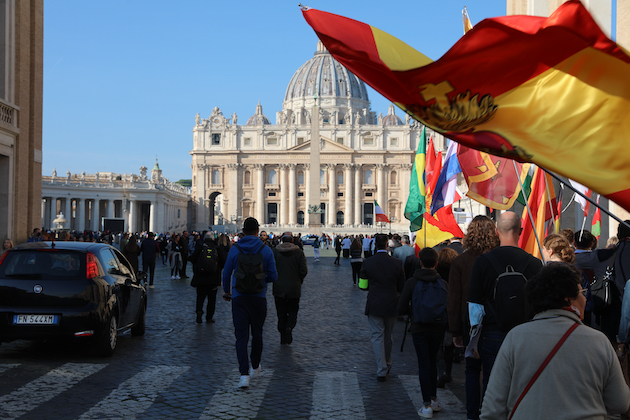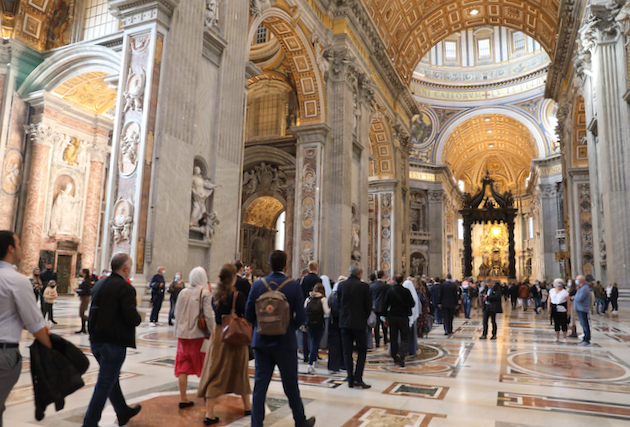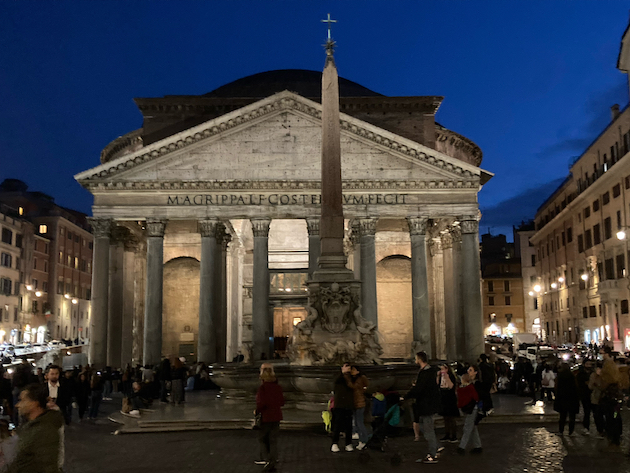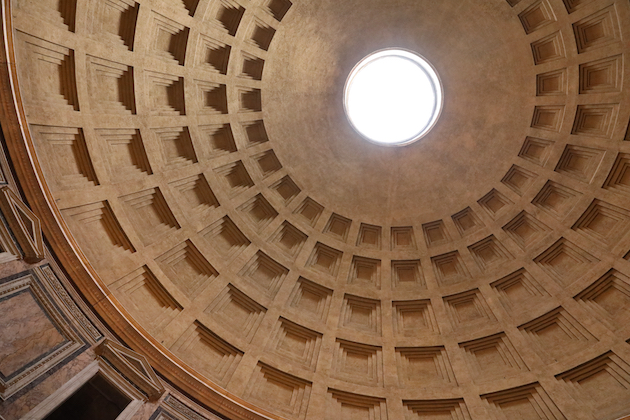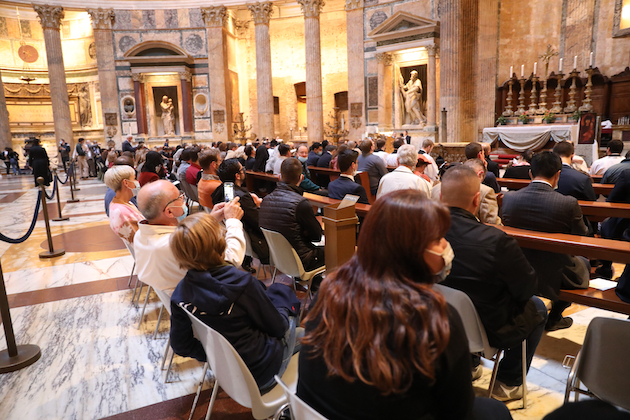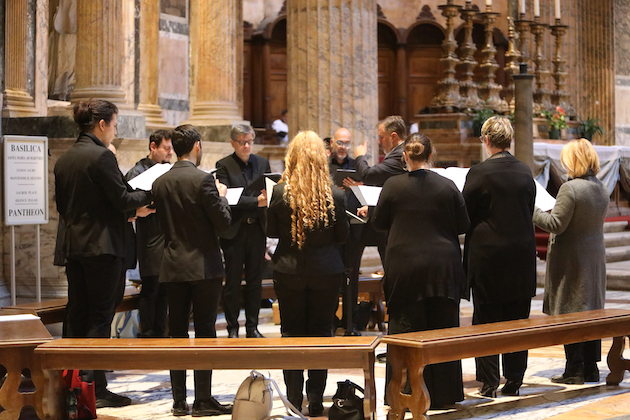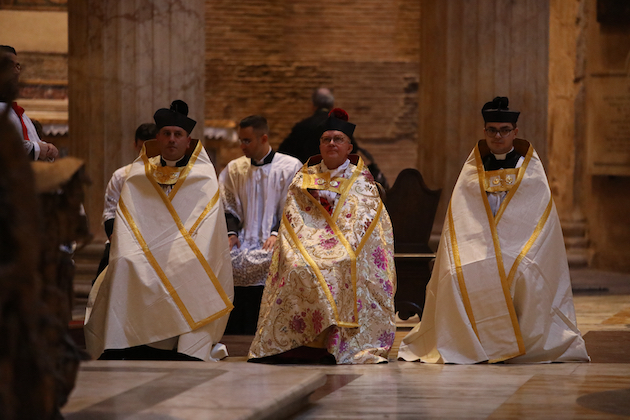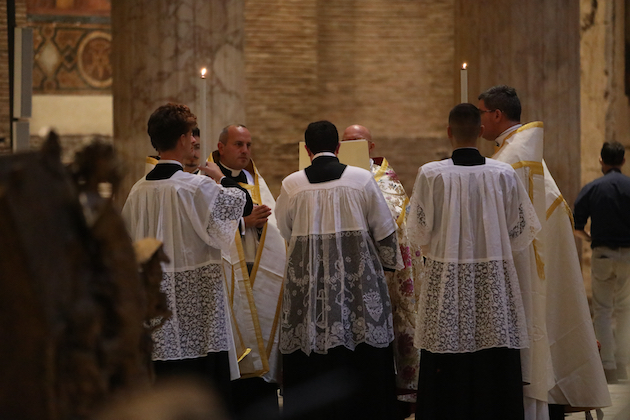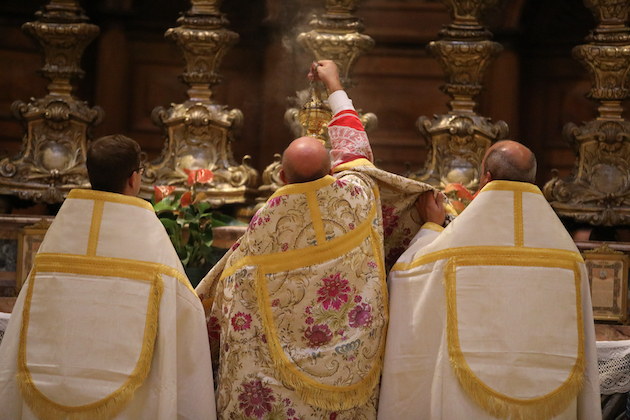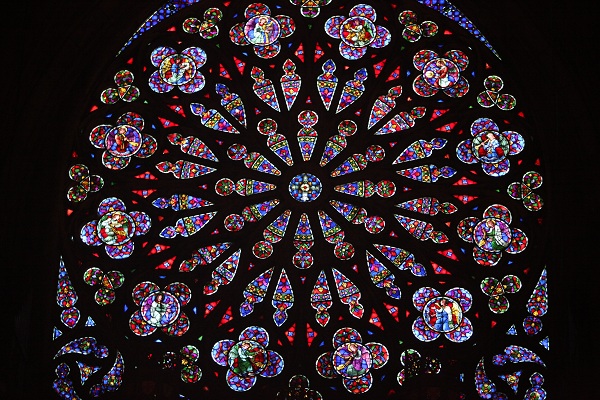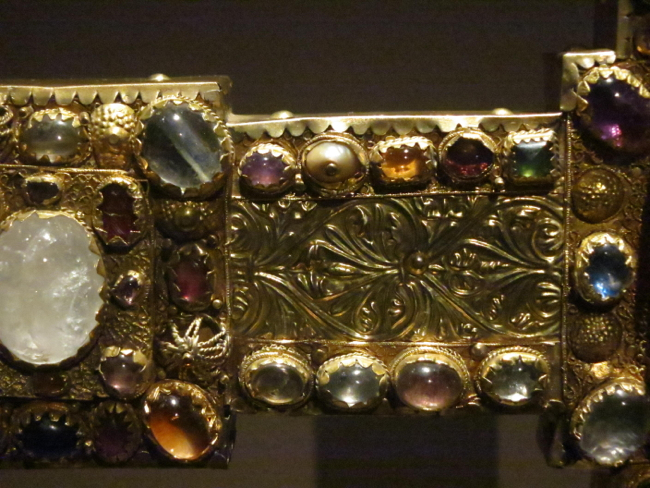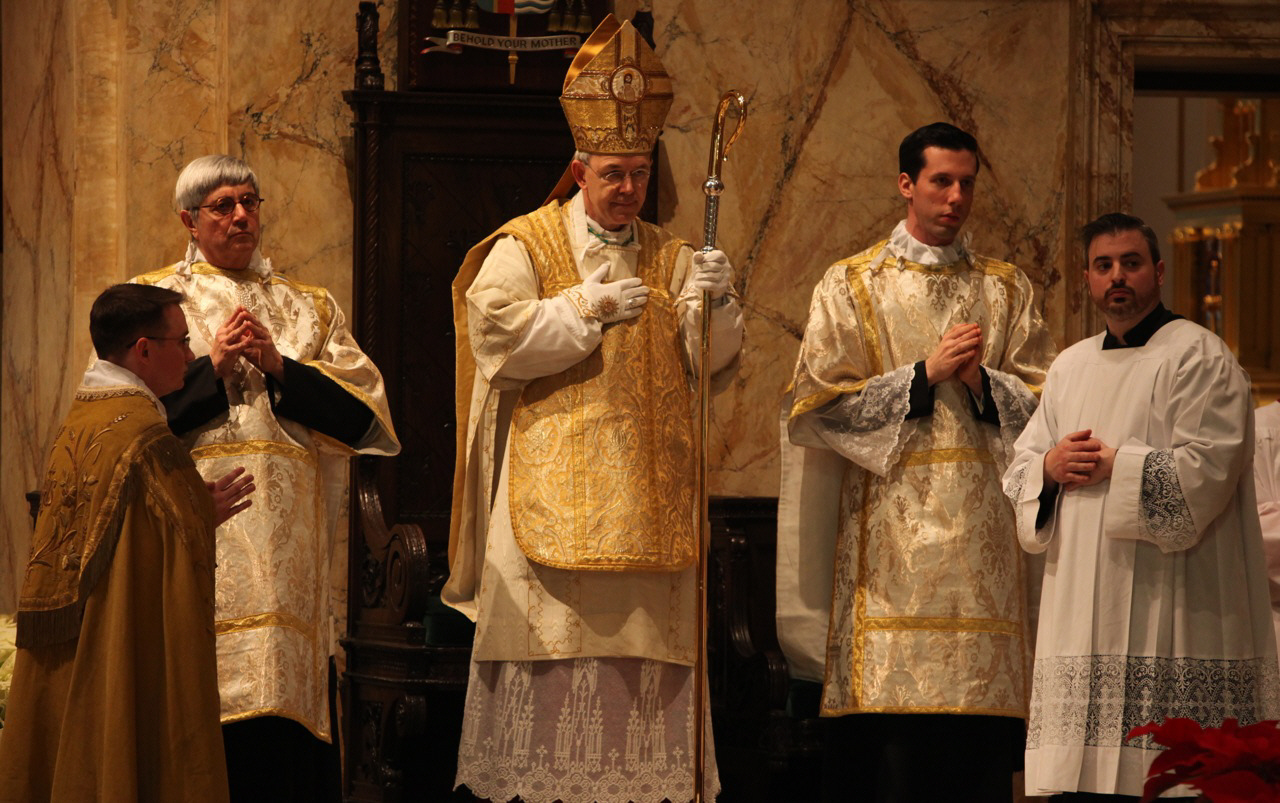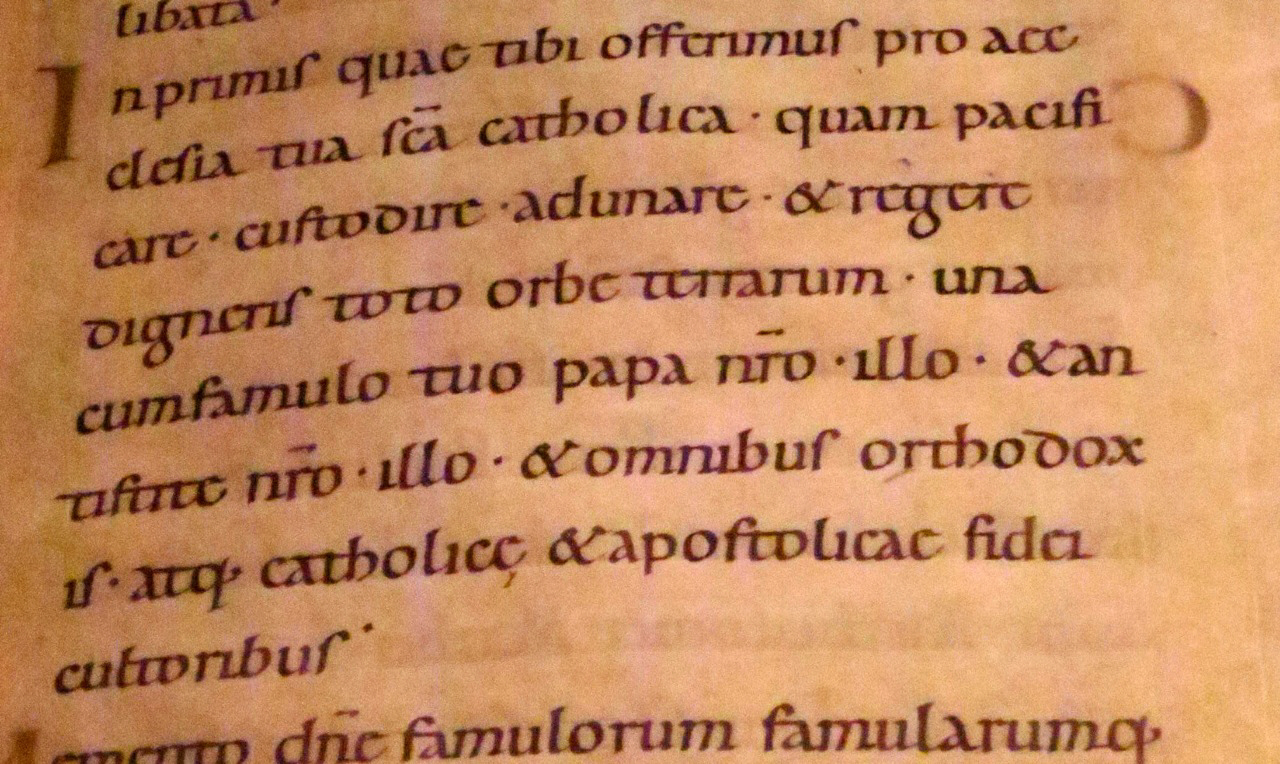What more can we add regarding the Populus Summorum Pontificum pilgrimage to that which has been already shown by the pictures that we and others have published ?
It’s endlessly inspiring to walk together with Catholics from so many countries – Italy, France, England, Sweden, Germany, even Vietnam. They came in this hour of crisis to show their faith. I witnessed no excitement, anger or rancor among them. The events of the pilgrimage unfolded in a calm and orderly manner. The organization was effective yet discreet. Did I detect here the presence of men who had gained experience on the “Pilgrimage of Christendom” from Paris to Chartres? Some of the hymns sung in the procession to St. Peter’s also reminded me of those heard on the path to Chartres.
The liturgical ceremonies of the three days of the pilgrimage proceeded beautifully and seemingly effortlessly. And the music at times was on an exceptionally high level. In my experience, that’s new on the continent of Europe – at least for France and Italy. The number of pilgrims surprised me; indeed, the capacity of the churches of St Celsius and Most Holy Trinity was really inadequate to receive the throngs of worshippers – but these parishes were of course mandatory, given that they were in the care of the Ecclesia Dei Communities (FSSP and ICRSS). And the mass of pilgrims made an impression even in the vast spaces of the Pantheon and St. Peter’s! And at the last Mass of the pilgrimage, the eloquent sermon summarized why we are committed to the Old Mass and the totality of Catholic Tradition.
Present at the pilgrimage were leaders of the Catholic organizations that have labored for so many years in the cause of Catholic tradition. Of course there were the priests of the Institute of the Good Shepherd, the Institute of Christ the King, Sovereign Priest, and of the Fraternity of Saint Peter. Then there were leaders of the European lay organizations: the Latin Mass Society, Paix Liturgique, the Lepanto Institute etc. These groups and individuals have been dealing with the hierarchy of the Roman Catholic Church and remember earlier years of adversity. And the proof of their effectiveness is that the events of this pilgrimage were able to take place at all in the face of the undisguised hostility of the Vatican. I was struck by their serene and confident attitude in the face of the ongoing crisis. I even hear the view expressed that perhaps bishops and laity in the Anglo-American world, unused to the ways of the Vatican, take documents like Traditionis Custodes too legalistically, whereas in France, Italy and elsewhere in Europe, Catholics are supposed to be more relaxed about Church legislation and its enforcement.
My reservation regarding all these admirable people is that, despite all their efforts, experience and connections, they clearly have little or no insight into the dealings of Francis and his circle of “advisors” – let alone any influence over their actions. For example, shortly after the conclusion of the pilgrimage, the Vicariate of Rome, certainly with the direct participation of Francis (the Vicar of Rome is a favorite of the Pope), made public drastically restrictive rules on the celebration of the Traditional rites for Rome itself. Only one venue for the Traditional Mass was unambiguously confirmed (Santissima Trinita) and celebration of the other sacraments and the Easter triduum in the old rite was prohibited everywhere. This is, moreover, the Pope’s first direct attack on the Ecclesia Dei communities, which have a leadership role among traditionalists in the Eternal City. The measure was dated October 7, yet I didn’t have the impression that any of the traditionalists or their clergy in Rome was aware of the imminent publication of such a measure – which, in a sense, is Francis’s response to the pilgrimage. It’s clear that Pope Francis intends to transform the threats of Traditionis Custodes into drastic reality – and that’s not just a misunderstanding of those in the English-speaking world! A long and grim struggle lies ahead.
In conclusion, the Pilgrimage Summorum Pontificum sets a great example for us all. For in this event, in the face of official indifference and worse, traditionalist Catholics of all ages, of all states of life and from many nations united to give public witness to their beliefs. Yes, going forward negotiations and prudence will be needed. But much more important in these times is testifying to the truth. Just as in the days of the martyrs – so vividly present to us even today in the churches and catacombs of Rome – Catholics are once more summoned to declare their faith openly and confess their principles before the world. It is tragic – but not at all unprecedented – that the persecutors are now within the Church itself. But I am sure that God, Who has brought us this far, in ways known only to Him, will bring good out of the present evil.
And Rome itself?
This pilgrimage of course took place in the city of Rome, the greatest witness, in brick and stone, to the course of Christian history – to its development, setbacks and glorious recoveries. On this visit, what most impressed me was not the relics of antiquity or the grandeur of the renaissance and baroque city, but the churches, often of the martyrs, from the later empire and the early middle ages, that illustrate Catholic history better than any book can do. St. Sebastian’s basilica, for example, which is located on the Via Appia and near several major catacombs. St Cecelia and St Chrysogonus in Trastevere feature ancient mosaics and columns taken from pagan structures; both arose over even earlier churches and Roman residences of pre-Christian times.
Especially complete is the complex of the churches of St Agnes outside the Walls and Santa Costanza. The latter, at first a mausoleum for Constantine’s daughter, was built by the middle of the 4th century. A site was chosen near the basilica and catacomb of the great martyr St. Agnes. The present basilica of St Agnes dates from no later than 638 – some 300 years after Santa Costanza!
These churches still let us sense the world of the martyrs, of the rise of the Church out of the underground into the light of day, of the firm establishment of Christianity in the face of all the political chaos and theological conflict of the dying ancient world. When the golden mosaic of the apse of St Agnes was created, for example, was not the Eastern Christian world beset and almost overrun by the onslaught, first of the Persians, and then of the Muslims? Was not most of Italy in the hands of the Lombards who still remained under Arian and even pagan influence? And did not even Pope Honorius, immortalized in the grand apse mosaic of St. Agnes, fall victim to the theological machinations of the Eastern Roman Empire (of which he still was a subject)? Later, he was even declared a heretic! Yet, despite all the vicissitudes of those now distant times, in the midst of clashing cultures, religions and peoples, the faith was preserved and handed down from one generation to the next. This should give us confidence as we too undertake to safeguard the tradition of the Church.
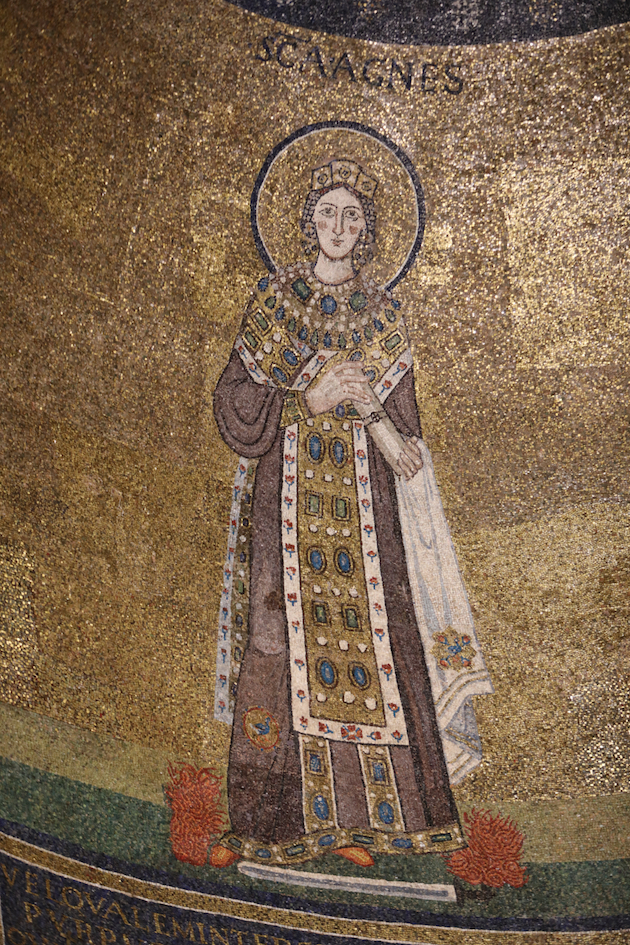
St. Agnes outside-the-Walls. (Above) St Agnes in the court dress of a princess or empress of the long-departed Eastern Roman Empire. At her feet are the instruments of her martyrdom (fire and sword). (Below) Pope Honorius I (625-638) holding the church of St. Agnes he had had built.

